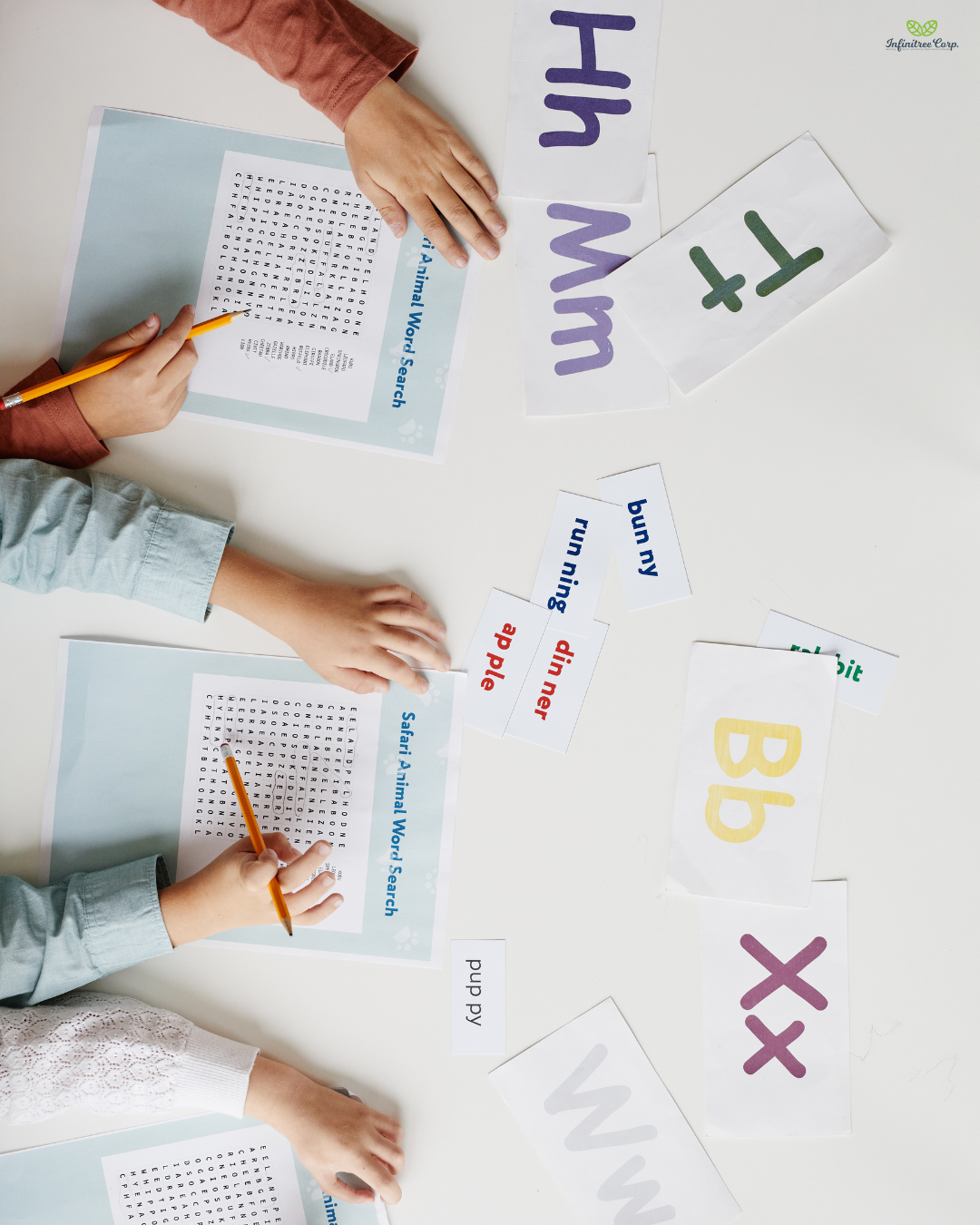
The Benefits of Language Learning on Brain Growth and Creativity
InfinitreeEditor.Jo
The Benefits of Language Learning on Brain Growth and Creativity
A New Language, A New World
Last year, my daughter started learning Spanish. At first, she found it difficult to remember new words and phrases. But within a few months, something incredible happened—her problem-solving skills improved, and she started coming up with creative solutions to everyday challenges. She even made up stories in both English and Spanish!
Learning a new language didn’t just expand her vocabulary; it helped her brain grow in ways I never expected. Language learning can unlock cognitive growth and creative potential in ways that benefit kids for life.
Limited Cognitive Stimulation
In today’s fast-paced world, many children face:
- Limited Mental Stimulation: Repetitive academic tasks may not challenge cognitive flexibility or creativity.
- Lack of Creative Thinking: Over-structured schedules can leave little time for imaginative play or exploration.
- Difficulty Adapting to New Challenges: Without opportunities to practice problem-solving, kids may struggle with adaptability and resilience.
Learning a second (or third) language offers a dynamic way to stimulate brain growth and nurture creativity by exposing kids to new ways of thinking.
How Language Learning Boosts Brain Growth and Creativity
-
Enhanced Cognitive Flexibility
- Switching between languages strengthens the brain’s executive functions, improving focus, multitasking, and adaptability.
-
Improved Memory and Concentration
- Learning vocabulary and grammar exercises the brain’s memory centers, leading to stronger retention skills.
-
Boosted Problem-Solving Skills
- Exposure to different linguistic structures encourages kids to approach problems from multiple perspectives.
-
Heightened Creativity
- Exploring new words, expressions, and cultural concepts expands imaginative thinking and innovation.
-
Stronger Neural Connections
- Bilingual or multilingual kids often develop denser neural pathways, enhancing brain efficiency and cognitive processing.
The Solution: Practical Ways to Support Language Learning
Incorporating language learning into your child’s routine doesn’t have to feel like schoolwork. With the right strategies, it can become a fun and rewarding experience that enhances both cognitive growth and creativity.
1. Introduce Language Learning Through Play
Why It Helps:
Kids learn best when they’re engaged and having fun.
How to Do It:
- Use language-learning games and apps designed for kids.
- Play memory games with vocabulary flashcards.
- Introduce songs and nursery rhymes in the target language.
Example:
Start with a game like “Simon Says” but give instructions in the new language (e.g., “¡Simon dice, salta!”).
Pro Tip:
Incorporate playful repetition to reinforce key phrases naturally.
2. Create a Multilingual Environment
Why It Helps:
Frequent exposure helps kids retain vocabulary and develop fluency.
How to Do It:
- Label household items with words in the target language (e.g., “refrigerador” on the fridge).
- Listen to children’s audiobooks or podcasts in the new language during car rides.
- Encourage your child to greet family members or friends in the target language.
Example:
Practice greetings each morning: “Bonjour! Comment ça va?”
Pro Tip:
Rotate the language focus weekly to keep learning fresh and exciting.
3. Encourage Creative Storytelling
Why It Helps:
Telling stories allows kids to use new vocabulary while enhancing imagination and communication skills.
How to Do It:
- Ask your child to create a short story using five new words they’ve learned.
- Create a story-telling jar filled with prompts in the target language.
Example:
Start with a prompt like “You find a magic door. What happens next?” and encourage your child to narrate the adventure.
Pro Tip:
Record your child’s stories and play them back to reinforce vocabulary retention.
4. Incorporate Language Learning into Everyday Activities
Why It Helps:
Integrating language into daily routines reinforces learning through practical use.
How to Do It:
- Count objects around the house in the target language.
- Use simple phrases during meals (e.g., “¿Quieres más agua?”).
- Cook a recipe from a country where the language is spoken, practicing ingredient names and instructions.
Example:
Prepare a dish like tacos or pasta, teaching words such as “cebolla” (onion) or “formaggio” (cheese).
Pro Tip:
Let your child teach you the words they’ve learned to build their confidence and mastery.
5. Explore Cultural Contexts
Why It Helps:
Understanding the culture behind a language deepens appreciation and contextual knowledge.
How to Do It:
- Celebrate holidays or festivals from countries that speak the language.
- Watch family-friendly movies or shows in the target language.
- Explore traditional crafts or music from the region.
Example:
For Spanish, you might celebrate Día de los Muertos by creating colorful crafts and learning about the holiday’s significance.
Pro Tip:
Travel to places where the language is spoken, if possible, to provide immersive experiences.
Putting It All Together: A Weekly Language Learning Plan
Monday: Play a vocabulary game using flashcards.
Tuesday: Listen to a children’s song or audiobook in the target language.
Wednesday: Practice simple conversations during dinner.
Thursday: Watch a short cartoon or movie scene with subtitles.
Friday: Create a story or comic strip using new words learned that week.
Saturday: Cook a recipe from a relevant culture and learn food-related words.
Sunday: Reflect on the week’s progress and celebrate successes with fun rewards.
By following a structured yet flexible plan, your child will steadily build their language skills while enjoying the process.
Tips for Supporting Language Learning
-
Be Patient:
- Language learning takes time, so celebrate small milestones to keep motivation high.
-
Model Enthusiasm:
- Show excitement about learning new words and phrases alongside your child.
-
Encourage Consistency:
- Regular exposure is key. Even 10-15 minutes a day can make a significant difference.
-
Use Visual Aids:
- Flashcards, picture dictionaries, and videos make abstract concepts more tangible.
Conclusion: Unlocking Creativity and Growth
Language learning isn’t just about speaking another language—it’s a powerful tool for cognitive development and creative exploration. By engaging your child with fun, hands-on activities, you’ll help them develop stronger problem-solving skills, adaptability, and cultural awareness.
Pair these efforts with proper nutrition and a supplement like Opti-up Alpha Plus to support their brain health and overall growth. Let’s inspire our kids to think beyond borders and embrace new possibilities—one word at a time!
Disclaimer: This article is for informational purposes only and does not constitute medical advice. Please consult your healthcare provider before making significant dietary changes or introducing new supplements to your child’s routine.






